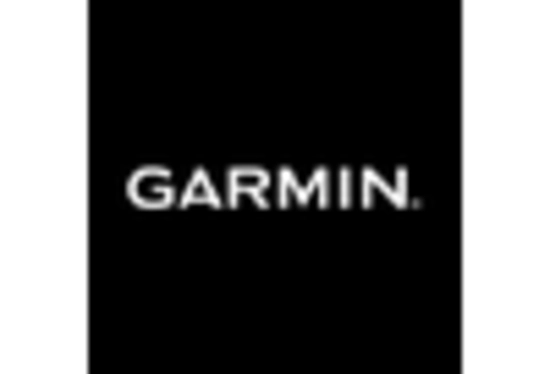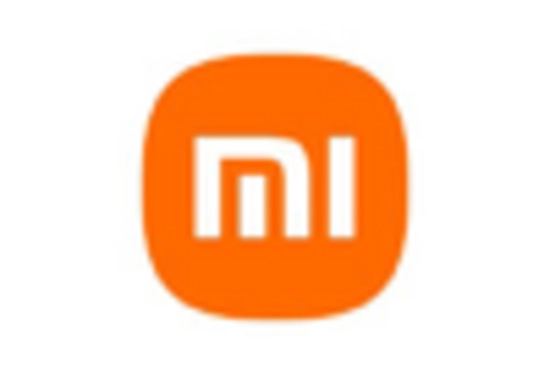The Wearable Tracking Devices Market is currently characterized by a dynamic competitive landscape, driven by rapid technological advancements and increasing consumer demand for health and fitness monitoring solutions. Major players such as Apple (US), Samsung (KR), and Garmin (US) are strategically positioned to leverage their brand equity and technological prowess. Apple (US) continues to innovate with its Apple Watch series, focusing on health features and seamless integration with its ecosystem. Samsung (KR) emphasizes its Galaxy Watch line, which combines fitness tracking with smart functionalities, while Garmin (US) maintains a stronghold in the fitness segment with specialized devices for athletes. These companies collectively shape the competitive environment by fostering innovation and enhancing user experience, thereby driving market growth.
In terms of business tactics, companies are increasingly localizing manufacturing and optimizing supply chains to enhance efficiency and reduce costs. The market structure appears moderately fragmented, with a mix of established brands and emerging players. This fragmentation allows for diverse offerings, yet the influence of key players remains substantial, as they set trends and standards that smaller companies often follow.
In August 2025, Apple (US) announced the launch of its latest Apple Watch model, which features advanced health monitoring capabilities, including blood glucose tracking. This strategic move not only reinforces Apple's commitment to health technology but also positions it to capture a larger share of the health-conscious consumer segment. The integration of such features is likely to enhance user engagement and loyalty, further solidifying Apple's market position.
In September 2025, Samsung (KR) unveiled a partnership with a leading health data analytics firm to enhance its wearable devices' data interpretation capabilities. This collaboration aims to provide users with personalized health insights, thereby increasing the value proposition of Samsung's wearables. Such strategic alliances are indicative of a broader trend where companies seek to augment their offerings through partnerships, enhancing their competitive edge in a crowded market.
In July 2025, Garmin (US) expanded its product line with the introduction of a new smartwatch tailored for outdoor enthusiasts, featuring advanced navigation and environmental sensors. This move not only diversifies Garmin's portfolio but also caters to a niche market segment, potentially increasing its customer base. By focusing on specialized features, Garmin aims to differentiate itself from competitors, emphasizing the importance of targeted innovation in the wearable tracking devices market.
As of October 2025, current competitive trends indicate a strong emphasis on digitalization, sustainability, and the integration of artificial intelligence within wearable devices. Strategic alliances are increasingly shaping the landscape, as companies recognize the value of collaboration in enhancing product offerings and market reach. Looking ahead, competitive differentiation is likely to evolve, shifting from price-based competition to a focus on innovation, technological advancements, and supply chain reliability. This transition suggests that companies that prioritize these aspects will be better positioned to thrive in the ever-evolving wearable tracking devices market.















Leave a Comment